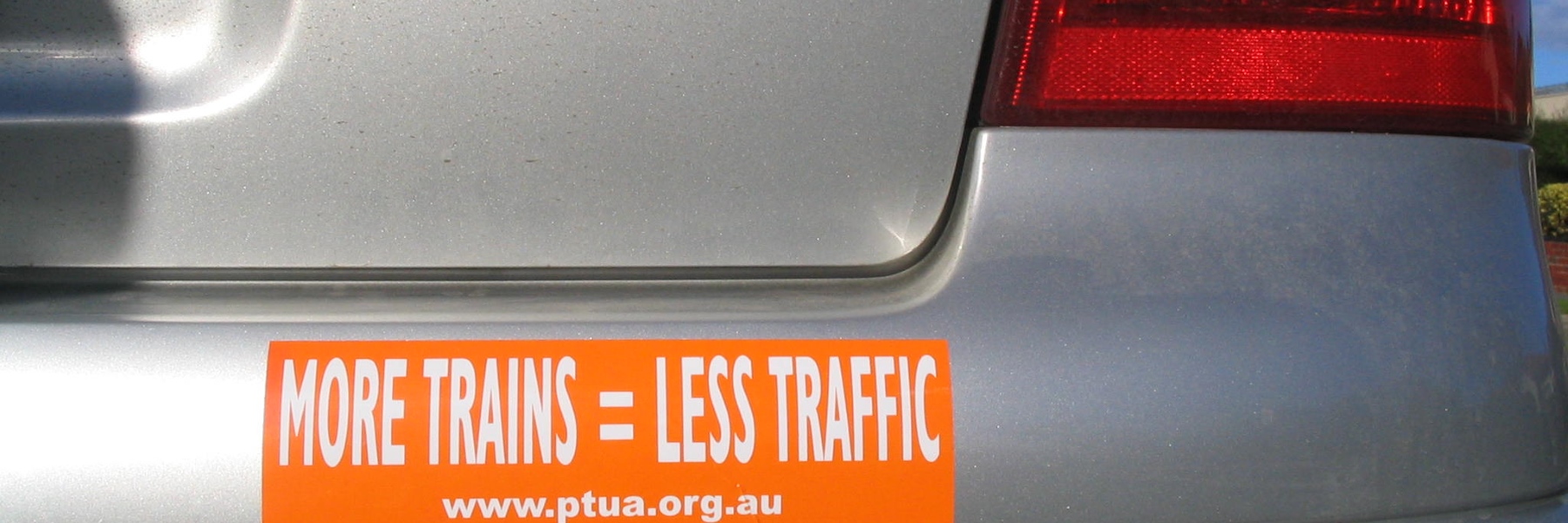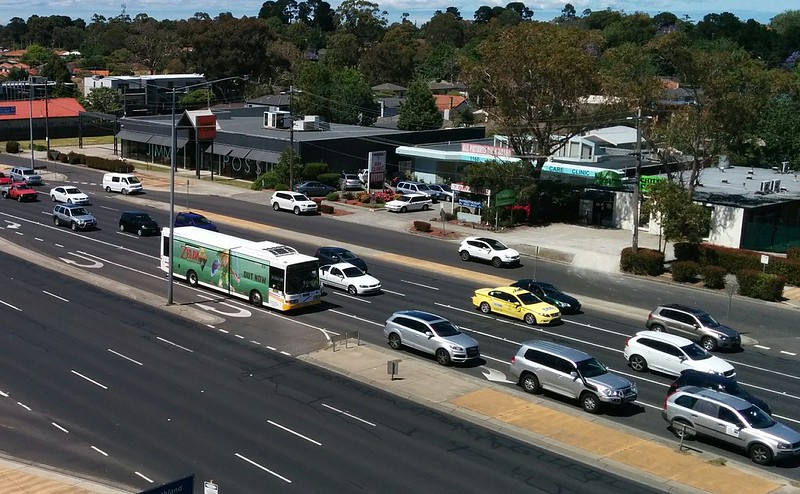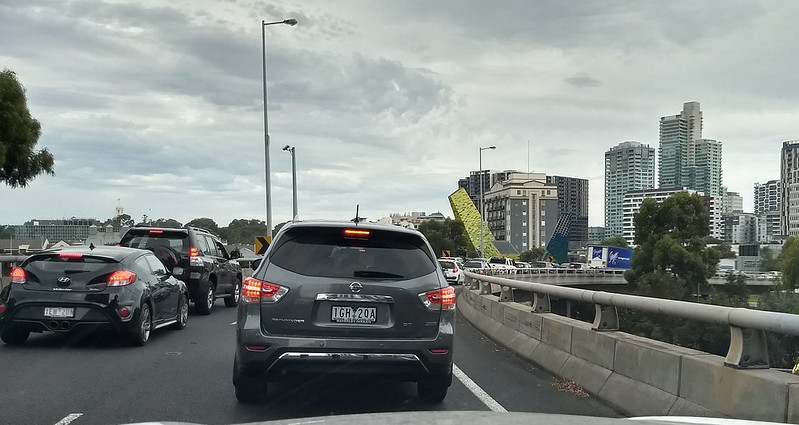I mentioned last year I was thinking about upgrading my car, which is frequently unused during the week, but still needed on occasions. Car share hasn’t reached our area yet.
Buying cars is not something I do lightly. In 18 years of driving, I’ve only owned two vehicles: a 1993 Magna (owned 2000-2008), and a 2000 Astra (owned 2008-).
Like any shopping, for something big or small, I agonise over it.
Car sizes
After some thought, for the purposes of shopping, I had narrowed down to a Toyota Corolla or Camry sedan.
Here’s something interesting: the old Mitsubishi Magna I used to drive was considered a midsize car.
The Toyota Corolla is considered a compact car. But the newer Corolla sedans actually have very similar dimensions to the Magna.
| Car | Magna 1993 | Corolla sedan 2013- | Camry 2011-17 |
|---|---|---|---|
| Length mm | 4746 | 4620 | 4820 |
| Width mm | 1775 | 1775 | 1820 |
| Height mm | 1430 | 1460 | 1470 |
| Weight kg | 1356 | 1300 | 1447 |
The Camry isn’t much longer than the Corolla, only 20cm. And only slightly wider: 5cm. Hmm.
Fuel consumption also not that different, on paper: Corolla 7.4 litres/100 km. Camry 7.8.
More reading on car sizes: How Small Cars Got Big, by John Cadogan
Used car safety
I want something with a five star ANCAP rating.
But given how little I drive, I’m also on a budget. So a 5-8 year old car is probably the target.
Here’s where things get interesting. How Safe Is Your Car provides ANCAP ratings of vehicles going back about 5 years.
Older than that, they give you “Used Car Safety Ratings”, which rather than being based on crash tests, are based on actual crash statistics: “Driver Protection rating based on analysis of real world crashes.”
And these show the Corolla rankings dropping markedly: a 2012 Corolla got five stars for ANCAP, but only rates 2/5 on the crash statistics — no better than my old 2000 Astra, or indeed the old 1993 Magna.
What I’m not clear on is whether there’s a difference between the hatch and the sedan. It doesn’t distinguish. The sedan is a bit bigger, and might perform differently in real world crashes.
In contrast to the Corolla, the 2006-2011 Camry got a four star ANCAP rating, but rates 4/5 on crash statistics. (Camrys from 2012 onwards have five star ANCAP ratings.)
I wonder if driver behaviour is a factor here? Camrys are not a very exciting car…
Finding the dealer
Last Monday afternoon, before I’d twigged on the real world used car safety ratings, I went to test-drive a Corolla I’d found on Carsales. Just getting there was a slightly torturous drive.
The car dealer was on a busy divided arterial road. I was approaching from the wrong direction, so I did a U-turn. It was about 3pm, and the road was very congested, but a kind motorist let me in… into her lane… the right-hand lane.
None of the other drivers were that considerate, and as we all crawled along, none would let me merge left… so I missed the car dealer.
Okay. I’m still in the right hand lane. I found the next U-turn point, so I could try another pass.
Ahead of me at the lights was a red car. When the light changed, we both did U-turns and headed back the way I’d come.
I noticed the red car also did another U-turn. Apparently I wasn’t the only one who’d been unable to merge across.
What fun. We’re all going around in circles.
I didn’t see if they made it a second time; I went a bit further down the road to where there was slightly less congestion, and managed to get into the correct lane this time and hit my target.
Test the right car, dummy
Having eventually made it to the car dealer, I chatted to the bloke and looked at the car.
A splendid beast indeed. I took it for a drive around the (large) block while he checked out my old Astra as a trade-in.
The Corolla was lovely. Good size, drove smoothly, not too many Ks on the clock.
I was even (perhaps overly) enamoured of the indicator lights on the wing mirrors.
Then I noticed it doesn’t come with cruise control. I hadn’t even thought to check. Only some models of they year’s Corollas come with it.
If I was just driving in the city, I wouldn’t need it. But I don’t actually drive much in the city. A few times a year, I drive to the country to visit the in-laws, and it’s incredibly valuable to have it.
Apparently you can get kits to fit cruise control afterwards. They’re not too expensive. But isn’t this just the type of after-market modification that messes with your insurance premiums?
And I’m likely to only get a pittance on the old Astra, at least from that dealer. I wasn’t expecting much, but 4 digits would at least be nice. He actually suggested I simply keep it. Yeah nah. Presumably it’s only value is parts.
Anyway, given what I’ve since discovered about real world crash stats, I’ll keep hunting, and I’m now leaning towards a Camry instead — or one of the others ranked highly in the TAC’s list of used vehicles.
Update 22/5/2018: I had been considering a Mitsubishi Lancer. Recent models are five star safety rated, and according to my cousin who has one, they’re made in Japan and very reliable, while being a bit cheaper than a Corolla.
Mitsubishi are discontinuing the Lancer in the next year or two, so the basic model hasn’t changed in some time — not that it matters. I think I’ll take a look at one.



20 replies on “Car sizes, and safety: New vs used”
I recommend avoiding after-market cruise control. To work properly, it has to plug into a spare CAN (controller area network) socket in the car and talk to the car in the way the car expects. This costs hundreds of dollars as a kit and then requires installation. It would be more economical to buy a car that comes standard with cruise control.
Further hassles occur if the car has analogue signal wires coming from the pedal sensor to the wiring loom, in which case an aftermarket cruise control might be (very inexpertly) spliced into these wires so that it pretends to be the actual pedal sensor. This was done to my last car before I bought it, and it ruined two pedal sensors and eventually made the engine prone to cutting out at random times. I had to remove it and repair the wiring to fix the problem (and then I had no cruise control).
Yes, size creep is definitely a thing. Our 2016 Yaris is a pretty good size match for our old 1992 Corolla, and a 2016 Corolla would be substantially larger – though still classed as ‘small’ IIRC.
I wonder, how many Camrys are there on the road in comparison to 2012 Corollas? If a given class of vehicle has a small population or just doesn’t crash very often for some reason, its statistical performance is more likely to appear a fair bit greater or less than its ‘true’ performance simply due to random variation, that has more of a chance to average out in crash data with larger sample sizes.
Back when we had a local industry churning out big sedans that people were increasingly less keen to buy, there was a certain interest in painting smaller cars as inherently unsafe but that’s not really what the stats were showing. We produced a PTUA myths page on it: http://www.ptua.org.au/myths/smallcar
We (family of 4) have been driving a Camry since 1996 (now on our second one) and have had no problems with them.
The boot is big enough for a full size cello (including case). There is enough room to carry camping equipment (although we do use a roof rack for some trips).
And, until recently, they were made in Australia.
Good luck. Car dealers are awful!
@Philip, thanks for that. The dealer ended up offering to fit cruise control as part of the deal. I’m not surprised it might have caused issues.
I don’t think retrofitting cruise control is wise, either. Camrys are dull cars, but very reliable and quite nice and their used car price reflects that. I drive newish Corollas at work and I am not keen on them. If you can possibly manage it, Stability Control can and does save lives.
Speaking of size creep, I remembered owning a 1990 Camry during my student days. Come to think of it, it’s probably smaller than today’s Corolla, and the early-2000 Civic I have now is about the same size and feel except smaller bonnet and bigger boot.
Can’t offer any additional car advice though. I am planning to drive that Civic into the ground and judging by how little I use it this days and with the amount of upkeep I put into it, it’ll probably last until I stop upkeeping it.
If it was built from July 2009 onward it will have electronic stability control, so you should be right in that regard with your desired age range.
Something to be aware of is that the ANCAP rating is not a constant variable. Five stars awarded in 2007 are lesser than five stars awarded in 2012 or 2017. It’s difficult to untangle ratings as a consumer, but even with the best information it’s not an exact science. The rule is generally to buy as new a vehicle model within your star rating as you can afford.
“Presumably it’s only value is parts.”
Ouch. That hurts like a towbar across the shins.
Besides that, have you considered an i30? It scores a solid five stars with ANCAP and NCAP while being pleasantly unexciting.
How viable is car share if it was in your area?
It is bizarre that oBikes could be left anywhere. Could share cars not be parked anywhere?
Buy an ex-gov car at auction.
Pickles, Manheim are the two main sites.
You strike me as the sort who would enjoy jumping the hoops to get it registered. Cars are generally less than 3 years old.
Process
1. Buy your ex-gov car at Auction. Cars are sold unregistered, with the balance of new car warranty available.
2. Pick it up later in the week after obtaining a permit to drive an unregistered car
3. Take to your fave service man, have it roadworthied. Trivial because the car has been well maintained.
4. In your case ring the VicRoads place behind Warragul Rd. Make an appointment taking the vehicle and RWC with you. 3 and 4 on the same day because that’s how long the permit is for at the cheapest.
5. Pay rego at VicRoads. The lovely lady will then give you new plates.
6. Make sure you then have a insurance cover note for your new wheels
7 Attach plates to new car.
8. Drive home to adoring family, incredulous at your thriftiness.
You’ve won; saved plenty and not had to deal with a shonky car yard.
Done this 3 times, each time a pleasure.
Take the guy’s word, keep the Astra and save your money. The dealer was probably hoping you’d buy a Hilux or an SUV instead (which is of course nothing more than a Corolla on stilts with a huge price difference), and his chances of making a profit off something that wasn’t even a Toyota were next to zero.
@AlanI – have heard that ex gov car auctions used to be great but now hard to find good value. Care to indicate price savings over buying used through gumtree?
Cheers!
1. Agree on car size inflation in general, but there’s a fascinating countervailing trend present, where things no bigger than a hatchback are being marketed as compact SUVs. I can see a little Suzuki bubble and a Mazda x3 parked next to each other near my house and the dimensions are very similar!
2. ANCAP is pretty limited in its goals and I don’t like it much. It obscures as much as it reveals.
A very rich data source is the real world crashes safety report (#330) from the Monash Accident Research Centre:
https://www.monash.edu/muarc/our-publications/2017
They’ve been doing it for years and hiding their light under a bushel. There’s mountains of amazing data in there.
A quick synopsis is that it will recommend a Toyota Prius, Honda City or Subaru Impreza/XV among smaller cars. It also makes clearer the trade-offs between safety and car size that ANCAP elides because of its methodology of comparing cars only within their class.
3. We had aftermarket cruise control on our old Magna and while it was far better than no cruise control, it didn’t work too well. slowed down a lot on uphills, sped up a lot on downhills… Which is precisely not the point!
Have a look at a late model Mazda 3 sedan. Smaller than Camry, cheaper than a Corolla, still fuel efficient, you can get the safety features you’re after, and they’re plentiful on the 2nd hand market.
There’s also a peer to peer car share service – car next door. Even if there aren’t many cars in your area, you could put your car on the service and start some car sharing there.
I will look at Hyundai i30, the latest model has improved a lot. It more like an European car made by Asian company. Good looks and great quality.
@Alan, I definitely would not enjoy jumping through those hoops! But thanks, it’s an interesting option.
@Jason, thanks for the Monash link. It looks like those are the results that TAC publishes as their Used Car Safety Ratings – but they summarise it, and I hadn’t been able to find a figure for the recent model Lancer, for instance. It’s in the full Monash report, and gets an okayish result, but not as good as some of the other small cars.
@Michael, I had steered away from the Mazda 3, because the Used Car Safety Ratings give it only 3/5 based on real-world crashes (for models up to 2013). However the Monash data shows the 2013-15 model is significantly better.
@Chris, Car Next Door do have some vehicles in my area. I’m just not sure it’s practical for my travel patterns. Overall kilometres isn’t high, but when I do drive, it can be for long distances, and overnight, which is expensive for any car share/hire scheme.
@Beto, thanks – the i30 is another one which only rates 3/5 in real world crashes for older models. Will check the newer, but unlikely to be in my preferred price range.
[…] My prolonged hunt for a new (used) car got me thinking about how much they have cost me… and how long I’ve kept them. […]
I suggest not to go with after-market cruise control. Because the more economical solution in that case will be buying a new car which has cruise control by default.